So where were we?
I had just self-published my first mini-comics, Ashtray #1 and 2 and was starting to attend local comic conventions. This would be 2003-2004. I was also still working at La Hacienda as a line cook, playing hockey with my team, The Flying Burritos, and would continue to do so until 2008.
I had left the studio I shared in Kensington Market and moved into a new house that I was renting with my wife. This new house had a great work space in the back. I still think this may be my favorite work space I ever had. It was super tiny and tucked away at the back of the house near a pair of sliding glass doors and my wife’s own work desk was there too. We worked back-to-back there for a couple years. I’d wake up and draw all morning and then go to work at the restaurant.
Despite the sense of accomplishment in self-publishing Ashtray, I was still feeling unsatisfied with the general direction of my work. The seemingly never-ending project that was Soft Malleable Underbelly finally came to an end. It was unfinished and I was burnt out on it. I had started and restarted that book at least three times, getting 50-100 pages into it and then I would totally run out of gas with the need to do something brand new.
Around this time I also got really into David Mazzuchelli’s RUBBER BLANKET comics. A lot of people know Mazzuchelli from his mainstream super hero work with Frank Miller, Batman: Year One and Daredevil: Born Again. And these are both two of my all-time favorite superhero comics, but Mazzuchelli left mainstream comics behind to do his indie anthology series Rubber Blanket and, sometime around 2004, I had picked up a copy of a French edition of one of the stories from Rubber Blanket, called Big Man.
I was really struck by how bold, chunky, and loose the brushwork in Big Man was and started experimenting more in my sketchbooks with using brush rather than the pens (which was how Ashtray and Soft Malleable Underbelly was mostly done). I was really emboldened by Mazzuchelli’s thick brush work and started doing lots of really chunky expressive drawings.
Also around this time I read about Scott McCloud’s 24-hour comic book challenge. You likely know Scott McCloud from Zot! and Understanding Comics. He had started or popularized a day each year where cartoonists tried to draw a complete 24-page comic, one page per hour, for 24 hours. The idea was to go into it without any preparation or any preconceived story idea and just see what came out spontaneously. Craving a fresh start with my work, and some new ideas, I decided to try my hand at the 24-hour challenge. Lost Dogs is what came out.
So, to be clear, I did not draw all of Lost Dogs in 24-hours (though it may look like it at times 😉. But I did start the book in this way. I sat down at my desk one night with the intention of doing the 24-hour challenge and started drawing Lost Dogs right in my over-sized sketchbook. I had no idea what the story was. I just made it up as I went along.
Looking back now it is clearly inspired by both Big Man and by Ron Pearlman’s character in the amazing film, City of Lost Children. As I got into the book that night, the story started to take more and more shape in my head. I got about 12 hours into the challenge and about 12-pages into the story and decided to stop. The story was coming and I started to see that it could be something more than just a fun experiment, and something longer than just 24-pages. So I stopped and decided to slow down and do it as an actual graphic novel.
I would continue to work on the book over a couple of weeks and complete it sometime in 2004. I still maintained the fast, loose and spontaneous approach, but I slowed down my process enough to craft it into a longer format story. The entire book was done right inside my sketchbook. If I messed up a page, I just tore it out and started over.
The use of the red ink became the visual trademark of the book, and even now I like the graphic element that gives the story. I distinctly remember the feeling I had as I finished the book. I felt like, for the first time, I had actually completed something of significance and something that was good enough to share. I had finally broken free from the prison that was Soft Malleable Underbelly and its endless, meticulous redrawing, and the the bold, fast brush style of Lost Dogs is what helped me break free.
The next big part of this story, and believe it or not, of my story as a cartoonist actually comes from the Teenage Mutant Ninja Turtles. In the late 90’s Peter Laird, one of the creators of the Turtles, had started a grant to help support up and coming comic book self-publishers. It was called the XERIC GRANT and some cartoonists I really admired had gotten that grant and used it to self-publish their first books. One that was particularly inspiring to me was Jason Lutes’ Jar of Fools (If you haven’t read Jason’s work go and get his masterpiece BERLIN right now!).
Luckily for me, the Xeric Grant was also available to Canadians. I had applied unsuccessfully with Ashtray in 2003, but after finishing Lost Dogs I decided to try again, knowing that this was a more complete feeling book. I had to do a lot of research on printing and distribution to apply and make a budget for the grant. I had no computer of my own back then so doing this kind of research was much harder than it would be today. The grant was for $5000 dollars to print and distribute your book. Back then $5000 may as well have been five million dollars. I worked the bare minimum I could at the restaurant so I had more time to draw and was often totally broke and barely making rent each month. So there was NO WAY I could ever afford to get Lost Dogs printed on my own and it was too long to just make photocopied zines like I had with Ashtray. So I mailed off my application and hoped for the best.
A lot of these moments are really seared into my memory. Finishing Lost Dogs, sending that application away…these were real milestones for me and I can still remember those moments so clearly. I really felt like I was on the verge of…something.
A few other big things happened around 2004-2005. Like I said, I was broke and starting to really worry about my future. Comics were my passion, but I was also getting a bit older and was now married. My wife and I wanted to have our own house and didn’t want to be broke every month. So I needed to find a way to make a better living than night shifts at the restaurant provided. I never thought I could make ANY money doing comics. The stuff I did and my drawing style was so far from the mainstream that I never imagined I could work for Marvel or DC or make any kind of regular money in comics. My only goal there was to find ways to self-publish the work and find ways to keep making new comics.
But I started to think maybe I could get freelance work doing illustration work and then do my comics on the side. I began to research this a bit and Sheridan College near Toronto had a really well respected illustration program and it turned out they were offering a 1-year post-graduate course. So, I took another leap and applied for the program and got in. Unexpectedly I was heading back to school for a year. My plan was to learn more about the business side of being a freelance illustrator. To hopefully come out of the program with freelance work opportunities that could supplement my efforts in making comics while I continued to work at the restaurant.
All of this was happening while my Xeric Grant application for Lost Dogs was still in review. So in September of 2005 I went back to school and this proved to be a totally transformative experience for me and my work and would bridge the gap creatively between Lost Dogs and Essex County.
So the next installment of From The Vault I’ll really get into this period. During this time my drawing style totally changed, and I actually did a number of comics projects that most people have never seen, including an entire graphic novel called The Adventures of Hawker Hurricane and my first paying comics gig, a 5-page sorry in a Beowulf comic. I’ll share all this stuff as well as a lot of the illustrations I did while at school, many of them became prototypes for Essex County.
But one thing before I go…while at school I got a call from my wife one afternoon. The Xeric Grant had sent me a letter in the mail. I asked her to open it and she read it to me over the phone…I got the Xeric Grant!
I had worked for five years in a total vacuum, mostly drawing for myself. And I had started to question if what I was doing had any value at all. Winning that grant was like pure validation. It proved that my work did have some merit and that maybe I wasn’t wasting my life hunched over a drawing board.
I remember hanging up the phone and waiting for the train to come to take me home and I literally felt like I was floating. I was going to publish Lost Dogs. Maybe I was a real cartoonist after all.
-Jeff




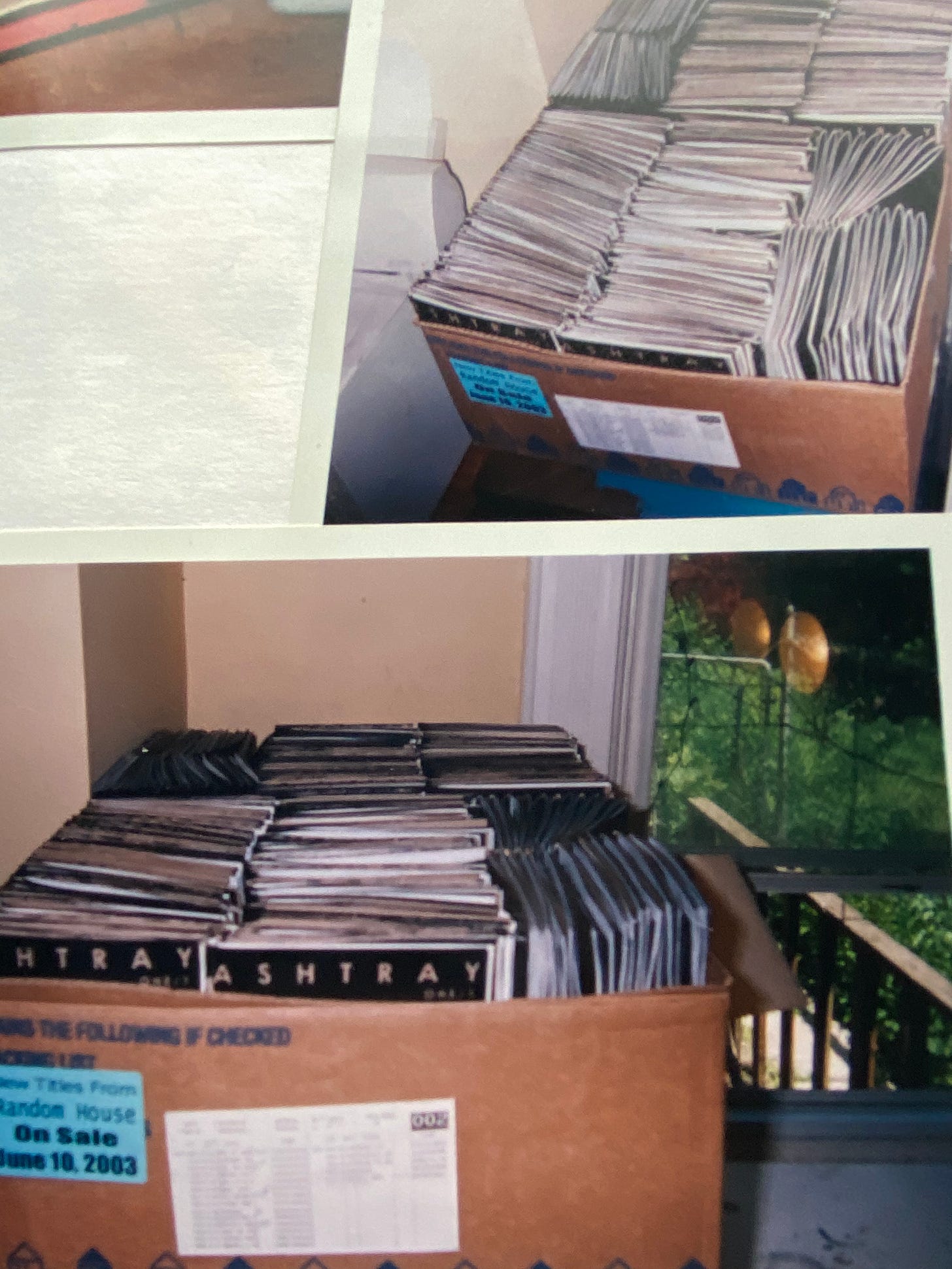










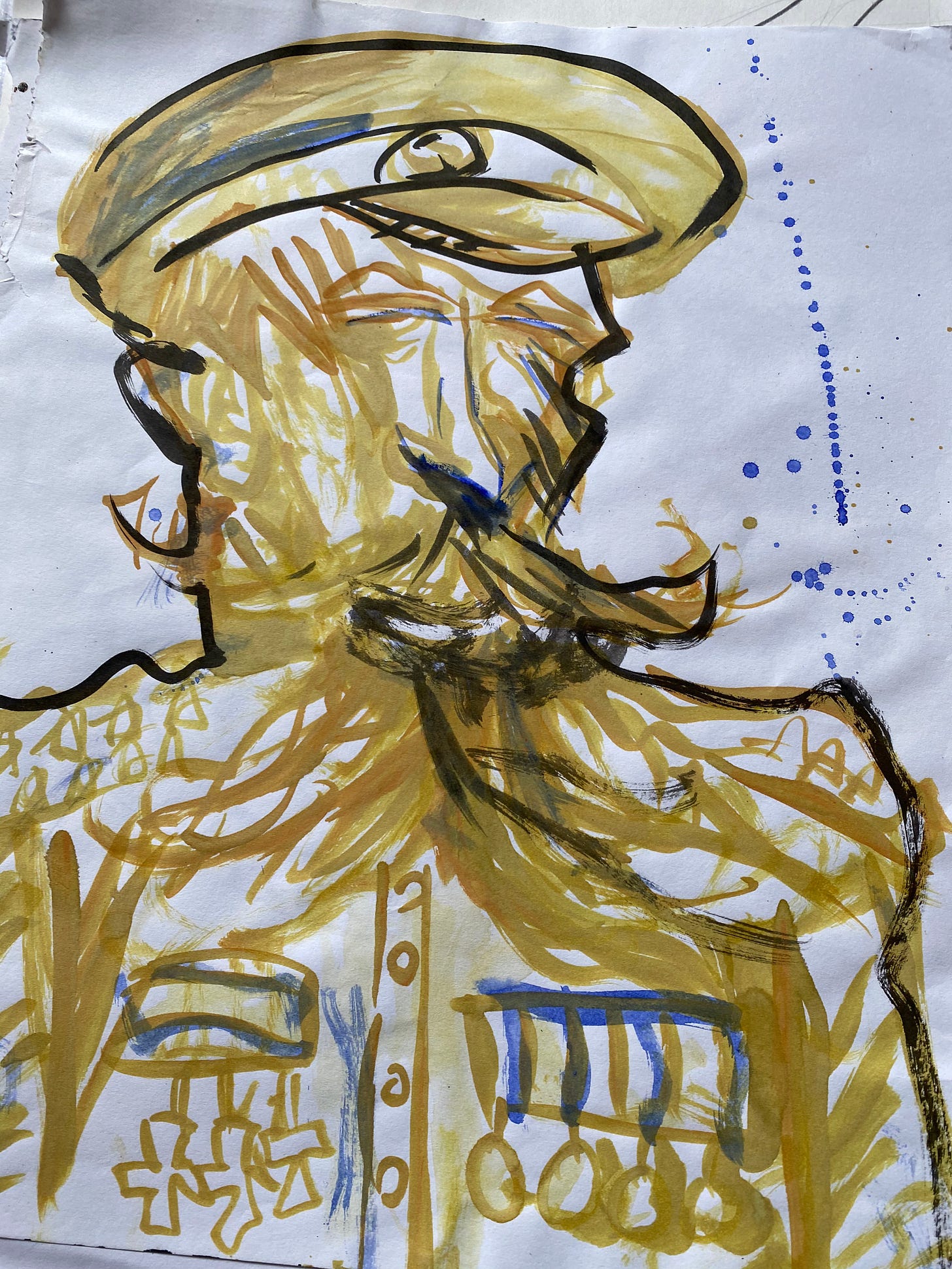

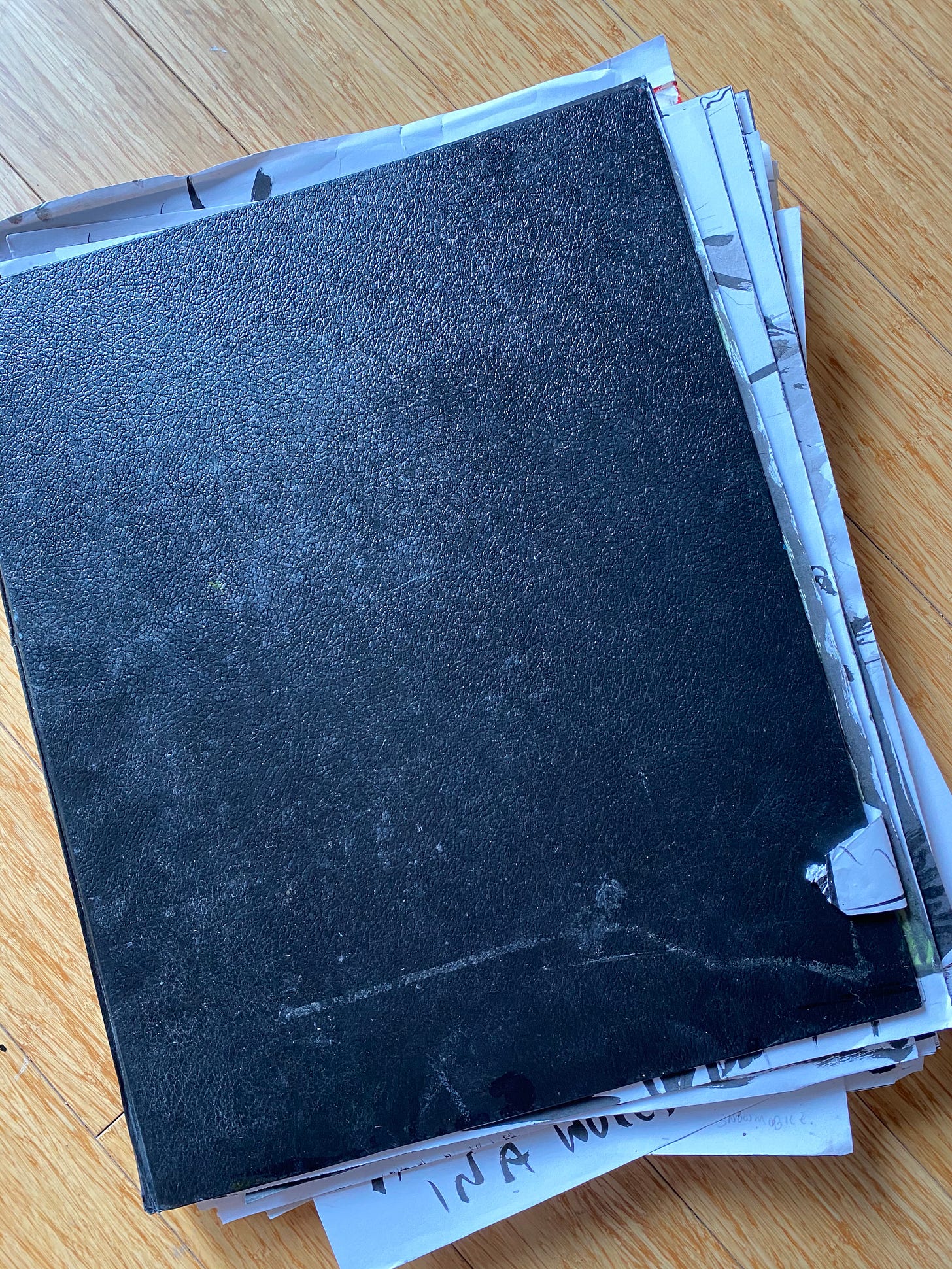





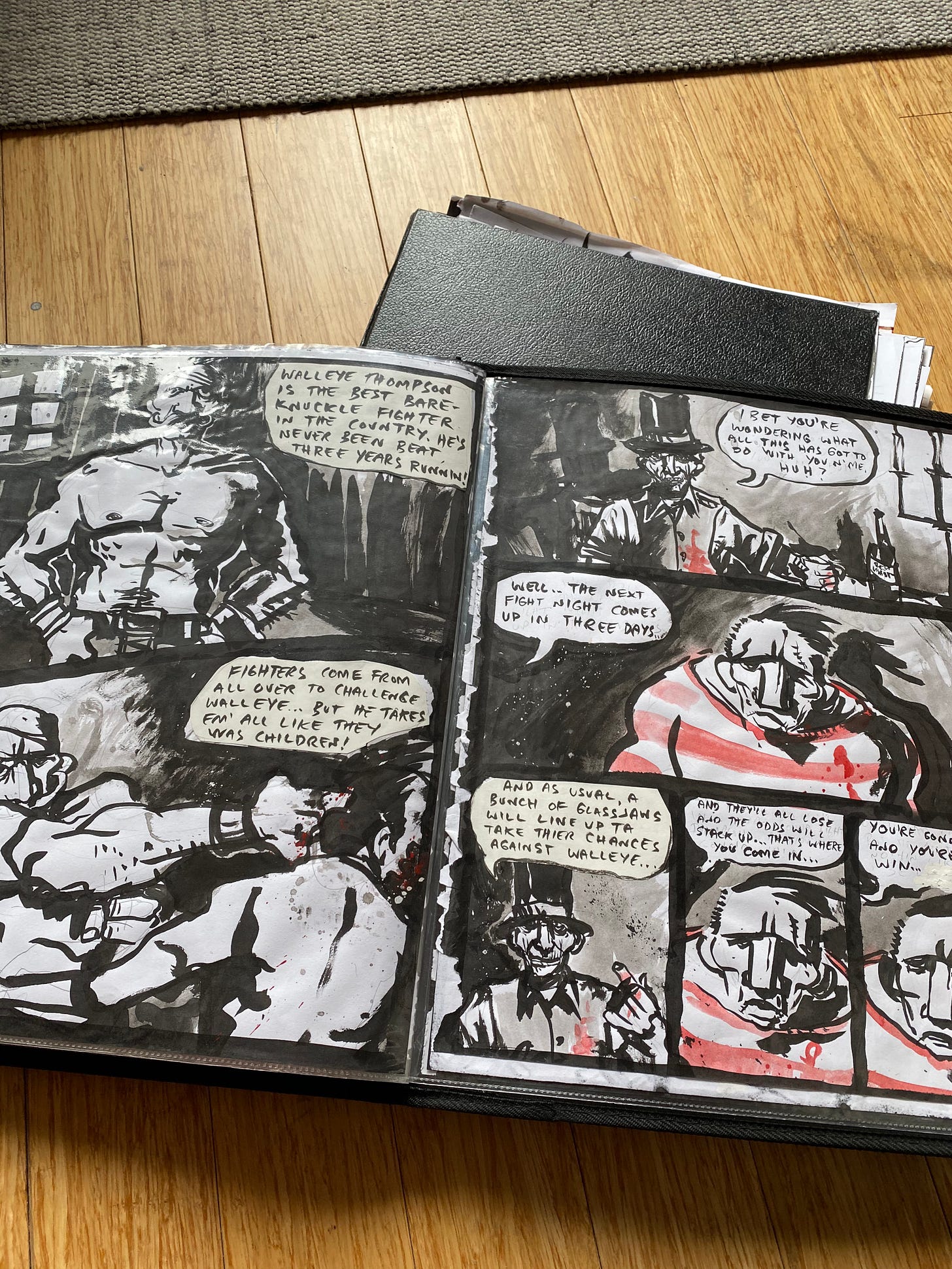
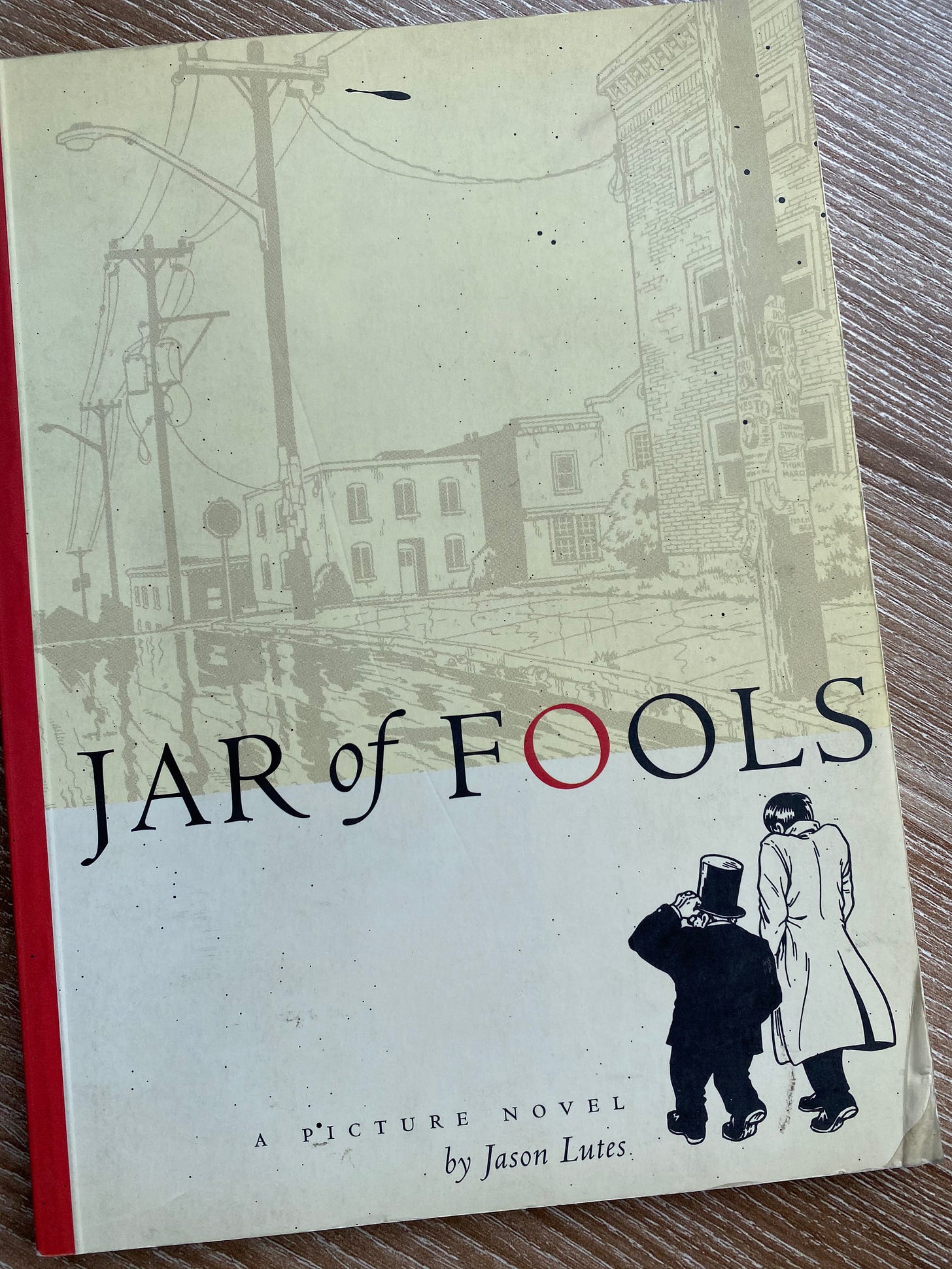
These sorts of fascinating retrospective posts are exactly why I subscribed. Thank you for sharing!
This was my favorite installment so far, thanks for the story. I’ve got a copy of that Ashtray Press edition of Lost Dogs and it’s quite a beautiful package still